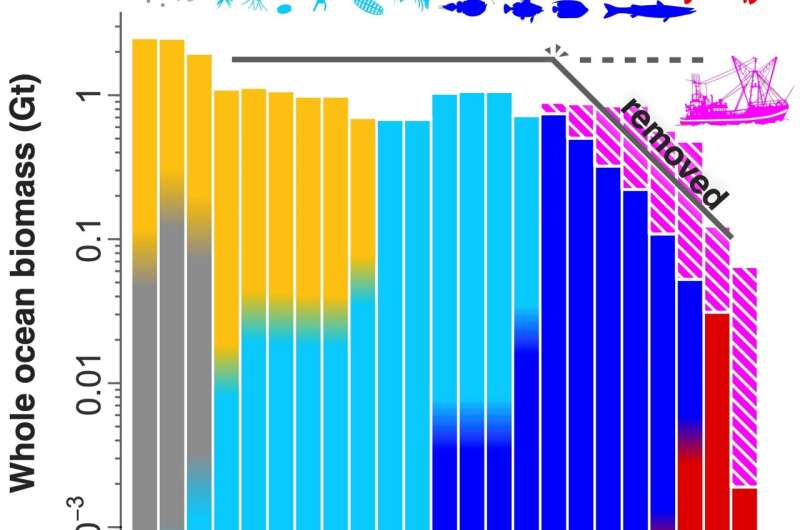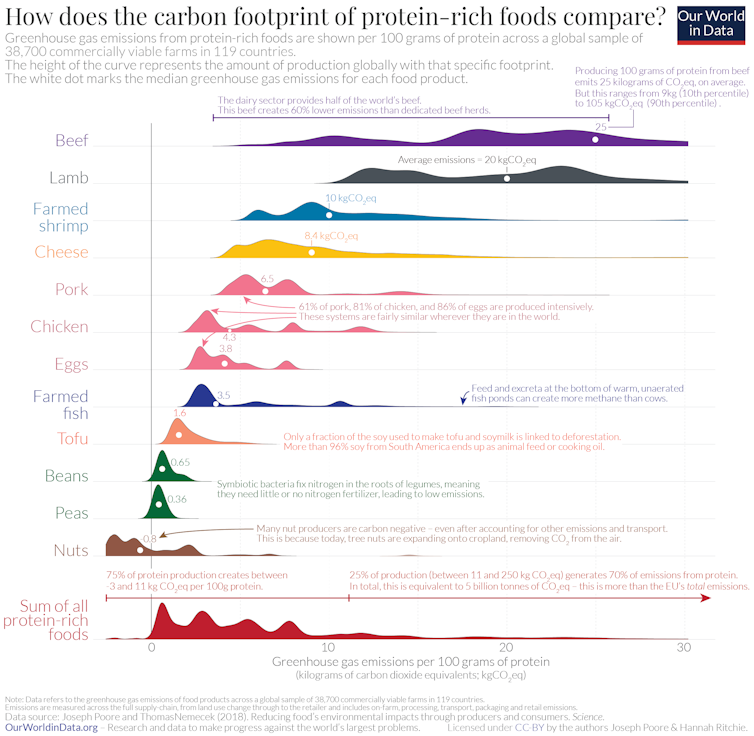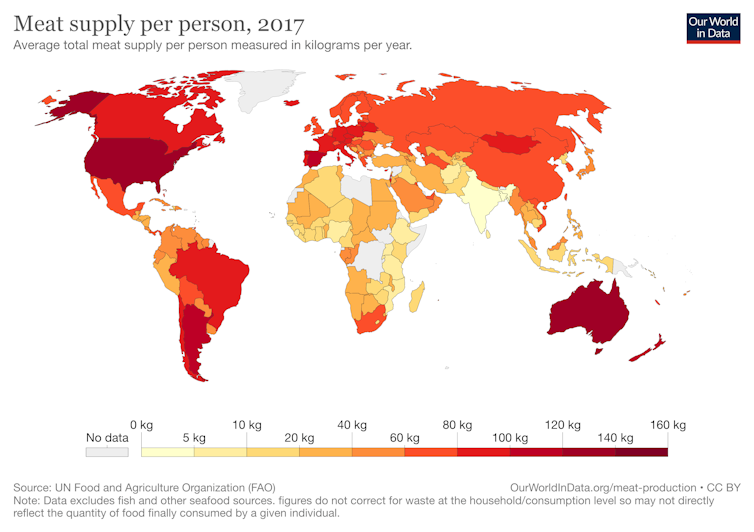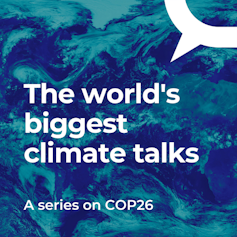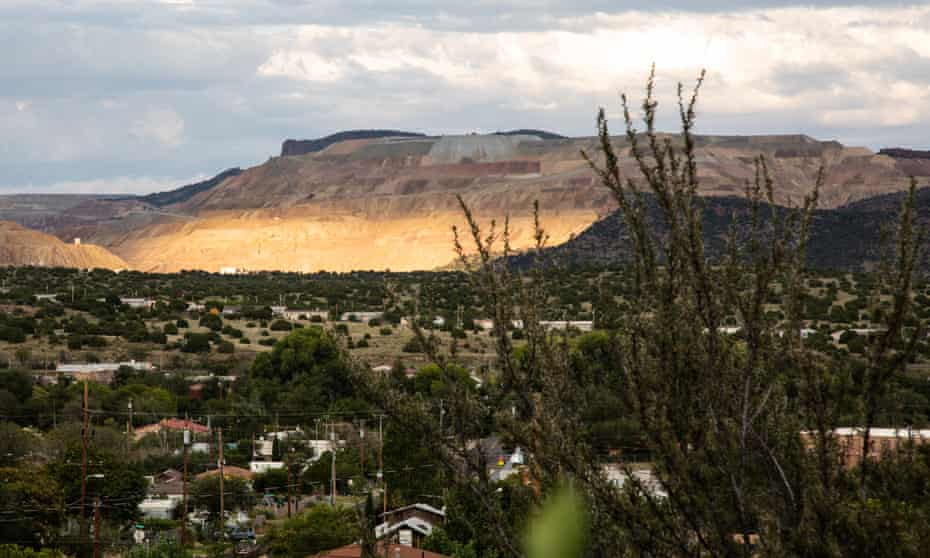
As the world shifts to wind energy and electric cars, demand for the conductive metal has increased. But mining copper brings its own environmental hazards
Supported by

Gitanjali Poonia for New Mexico In Depth; Graphics by Aliya Uteuova
Tue 9 Nov 2021 10.00 GMT
This story is co-published by New Mexico In Depth and Guardian US
Corky Stewart, a retired geologist, and his wife live in a rural subdivision in New Mexico’s Grant county, about a mile north of the sprawling Tyrone copper mine
“We’ve been here three years and we’ve heard four blasts,” Stewart said of the mine, one of four on an expanse of land partitioned into dozens of four-acre lots. From his perspective, the blasts don’t seem unreasonable, given that a mining company owns the property and has the right to do what it wants.
But he didn’t know when he bought the property that the company would propose a new pit called the Emma B just a half-mile from the wells he and his wife depend on for drinking water. “If they were to somehow tap into our aquifer and drain our water supply, then our houses become valueless,” he said.
“We’re not making any effort to prevent the pit from being built,” he said. “All we’re really asking is for them to give us some commitment that they will fix whatever they do to our water supply.” But the mine, owned by the company Freeport-McMoRan, refuses to give them this assurance, he said. Freeport-McMoRan did not respond to multiple requests for comment by New Mexico In Depth and the Guardian.
The company’s effort to expand comes as the US expects to invest in energy sources that are cleaner than fossil fuels, and the global demand for copper rises. Copper conducts electricity, bends easily, and is recyclable – which makes it a critical material for most forms of renewable energy, from wind and solar to electric vehicles.
But when “clean energy” relies on the extraction of metals like copper, it can also pollute the surrounding environment.
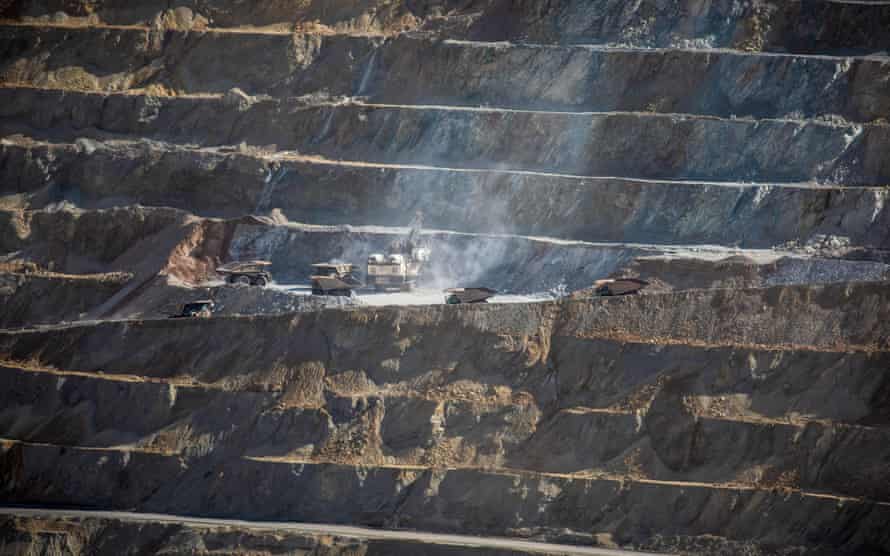
Companies dig huge holes into the ground, going deeper than the water table. Heavy machinery kicks up dust, polluting the air. Chemicals are used to leach the mineral out of ore, and exposed water is forever contaminated. Some operations, like Freeport’s Tyrone mine, will have to pump water in perpetuity, even after there is no longer copper to be found, so that contaminated water from the mine site doesn’t flow back into the wider water table.
Chris Berry, an independent analyst focused on energy metals, said the push for clean energy is a big reason for increased demand for copper, which is estimated to grow by 350% by 2050 if the world moves towards clean energy. Its price nearly doubled from 2019 to 2020 in the US.
That’s partly because copper’s role in the transition to clean energy cannot be overstated. “We’re really going to have to re-engineer the electricity grid to make it cleaner and greener and more efficient. And that’s going to take a lot more copper, and copper mining.”
This reality puts environmentalists like Allyson Siwik, executive director of the Gila Resources Information Project, a local environmental advocacy organization in Grant county, in a tricky spot.
“We are trying to transition to a clean energy economy, right?” said Siwik. “So we obviously are very supportive of that.” However, she adds, “the increase in global demand for these metals is very disconcerting to me. You know, it’s frontline communities like us here in Grant county that bear the cost of the increased exploration, expansion of mining.”
Tucked away in rural areas of Grant county in south-western New Mexico, the vast Chino and Tyrone copper mines owned by Freeport-McMoRan don’t garner much attention in the state’s metropolitan center. But the state ranks third in copper production nationally, and the mines employ more than 1,300 people. As demand for copper increases, local employment could grow.
Freeport-McMoRan is betting on it.
The company’s 2020 annual report estimates that the demand for copper will double in the next five years as a result of growth in electric vehicles and renewable technology.
“There is an increased interest to mine copper at both existing and proposed mines to support clean energy,” Holland Shepherd, manager of the mining act reclamation program at New Mexico’s department of energy, minerals, and natural resources, said in an email.
In Sierra county, another mining company is proposing to reboot the Copper Flat mine, which briefly operated in the early 1980s before prices fell and it shut down. Themac Resources is applying for a 12-year mining permit, which also requires acquisition of enough water rights to satisfy state regulators.
Advertisement
Nearby, residents of the village of Hillsboro are concerned.
“We depend on our wells here in town for all our water,” said Gary Gritzbaugh, who has lived in Hillsboro for 25 years and is the president of the Hillsboro Mutual Domestic Water Consumers Association. The small water association serves 80 to 90 customers and has operated for more than half a century. “It is a good system,” he said, but he’s deeply concerned that the mine will drain or contaminate their wells.
Gritzbaugh said that while engineers from the mining company reassured the town that contaminated water from the mine won’t reach Hillsboro’s water supply, he isn’t certain. “Groundwater is just an underground river, it goes wherever it wants to go. People say, well, it’s not going to drain this way, it’s going to drain towards Rio Grande. Well, maybe, maybe not.”
For environmentalists set on reducing carbon emissions, there are no easy solutions to the threat that mining for copper and other essential minerals poses for communities like Hillsboro or rural residents like Stewart.
Noah Long, the western region director of the climate and clean energy program at the Natural Resources Defense Council, said that without an energy transition, there will be devastating consequences, some of which are already surfacing. “We can’t afford to wait,” he said. But he noted the need for adequate regulation of mines, as well as reusing and then recycling electric vehicle batteries.
Establishing a market to recycle electric vehicle batteries – which can last a dozen or more years – could help reduce demand for copper and rein in mining operations in areas like New Mexico, where copper ore is abundant.
“We need to shift to a policy that creates clear incentives for recycling,” said Aimee Boulanger, the executive director of the Initiative for Responsible Mining Assurance. She noted that extracting metals is now more profitable than recycling them.
In 2020, an estimated 35% of copper was recycled in the US, and about a third of total global demand is met with recycled copper. But electric vehicle battery recycling is minimal. Electric vehicle batteries contain copper, nickel, cobalt and lithium; of these, cobalt and nickel are usually recoverable for new batteries, but lithium and copper are captured for use in other industries or products, or lost in the process.
When lead-acid batteries came into the picture in 1859, they were rarely recycled – but now they are easily broken down for reuse. This could be the blueprint for electric vehicle batteries. China has already issued provisional regulations that encourage manufacturers to set up networks for collecting and recycling used batteries. The EU has a drafted act that tackles sustainable batteries.
If electric vehicles are the alternative to oil-guzzling cars, then their impact – from the mining and extraction of raw materials needed to build them to managing the waste from that process – should be addressed, said Boulanger. “And we need to make sure that we’re working to reduce that impact.”
Encouraging automakers and electronics companies to work with suppliers who source minerals responsibly is also important, environmentalists say. At the end of the day, such mines won’t ever be 100% safe, said Siwik, who recently joined Indigenous tribes and environmental groups calling on the federal government to revise hardrock mining regulations.
“We need to demand the maximum amount of environmental protection, that mines are following best management practices and being as protective as possible.” That means lining stockpiles, preventing toxic pollutants from entering groundwater, mitigating air quality impacts, and ensuring that mines reclaim the land as soon as a particular mining area is used up.

Encouraging automakers and electronics companies to work with suppliers who source minerals responsibly is also important.
Siwik suggests an accreditation standard awarded by the Initiative for Responsible Mining Assurance (IRMA) for scoring companies’ mining practices.
IRMA was developed independently of other standards adopted by mining industry associations. It uses public audits based on social and environmental responsibility, business integrity, and what it calls “planning for positive legacies” to measure performance. The results, reviewed by an independent auditor, are released with details about the mining operation, visited facilities and interviews that the auditors conducted with company representatives from across different departments.
The public audit covers “everything from protecting Indigenous people’s rights, to biodiversity and water, to worker health and safety”, said Boulanger. IRMA has already conducted public audits of a platinum mine in Zimbabwe and a lead-zinc mine in Mexico.
Tiffany’s, BMW and Ford Motors have already committed to sourcing responsibly, so if a mine wants to be a part of these supply chains, they would have to adhere to high standards, said Boulanger.
But environmentalists worry that copper mining giants in New Mexico will be reluctant to follow such standards.
Last year, Freeport-McMoRan announced its commitment to another standard, the Copper Mark Responsible Production Framework. Designed specifically for copper operations, it was developed by the International Copper Association, an influential trade group. This standard does not give governance and voting power to affected communities, organized labor, non-governmental environment or human rights organizations, like IRMA’s multi-stakeholder system does. But Copper Mark does issue reports based on sustainability standards. And according to Shepherd, of the state energy, minerals, and natural resources department, the Copper Mark and another standard created by the industry-led Council on Mining and Metals are both good.
But communities affected by mine operations are often skeptical of data and reports provided by industry.
When the company assures him that the water polluted by the proposed Emma B mine won’t reach his water wells, Stewart is unconvinced. “It’s the mine providing the data, right?” he said. “They’re the ones paying an expert and you know, if you want an expert to say something, [you can] just pay him money.”
Once the company has the permit, the only recourse residents like Stewart would have in the event of water contamination would be suing in court, which takes significant financial resources, he said.
“I can’t afford to hire my own hydrology firm and lawyers and all this,” says Stewart.


